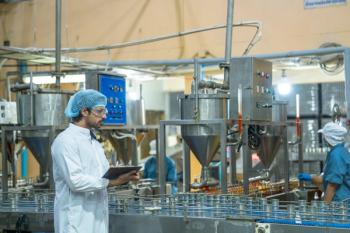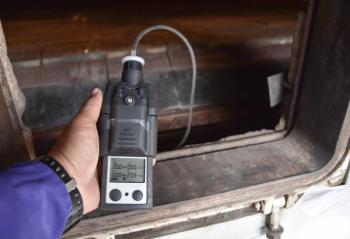
FTIR-ATR Spectroscopy Enables Early Detection of Fungal Infections in Bread
A recent study out of Ben-Gurion University investigated how Fourier transform infrared-attenuated total reflectance (FT-IR-ATR) spectroscopy can detect fungal contamination in bread.
Researchers at Ben-Gurion University of the Negev recently explored using Fourier transform infrared-attenuated total reflectance (FT-IR-ATR) spectroscopy as a rapid and accurate method for detecting fungal contamination in food products. Using bread for their sample, the researchers demonstrated how FT-IR-ATR spectroscopy, when combined with machine learning (ML) can rapidly and accurately detect fungal infections (1). The findings of this study were published in Spectrochimica Acta Part A: Molecular and Biomolecular Spectroscopy (1).
Although some food is made with fungi, such as several types of cheese, there are some fungi that are harmful to human health. Out of the 1.5 million fungi species on earth, approximately 300 can cause illnesses to humans when ingested (2). Significant economic losses can also result from fungal infections in food, as these fungi soil food products and result in massive waste (1,2).
In this study, the research team from Israel attempted to determine whether FT-IR-ATR spectroscopy can detect fungal infections within 24 h before visual signs of infection show up. Their method worked by measuring the infrared (IR) absorption patterns of different chemical bonds in the sample, which change when fungal contamination occurs (1). Key spectral differences were noted in the Amide I, Amide II, and carbohydrate regions, all of which are important markers for distinguishing between pure and infected bread (1).
Apart from using FT-IR-ATR spectroscopy, the researchers integrated a random forest ML algorithm to improve the analysis. The ML algorithm helped classify the spectral data they received, achieving an 86% overall accuracy in differentiating between contaminated and uncontaminated bread samples as well as an 84% accuracy in correctly identifying specific fungal species within the first day of infection (1).
One of the main benefits of this method was how quickly the analysis could be conducted. From start to finish, the entire detection process (which involves analyzing the samples and classifying the fungal presence) lasted minutes. Because of the quick turnaround process, the method used in this study marked an improvement over previous methods, all of which require much more time to confirm contamination (1).
The findings of this study open the door for FTIR-ATR spectroscopy to become a valuable complementary tool for food safety monitoring. If further research supports its scalability, this technique could be integrated into industrial food processing and quality control workflows, reducing economic losses and improving consumer protection (1).
Although the study’s results are highly promising, the researchers discussed why further investigations are needed. As an example, the researchers mentioned how expanding the spectral database with more diverse fungal species and food matrices could improve the robustness of the technique, which would help make it effective for a wider range of food products (1).
Moreover, integrating FTIR-ATR spectroscopy with portable and automated systems could make real-time food safety monitoring a reality. Developing user-friendly and cost-effective devices based on this technology could empower food manufacturers, regulatory agencies, and even consumers to detect contamination at early stages (1).
Although the researchers used bread in this study, fungal infections impact other food items, such as dietary supplements and beverages (2). As a result, by achieving rapid and accurate identification of fungal infections in bread using FT-IR-ATR spectroscopy, the researchers demonstrated that their novel approach could help improve food safety and reduce economic losses in the food and agriculture industries.
References
- Abu-Aqil, G.; Adawi, S.; Huleihel, M. Early and Swift Identification of Fungal-Infection Using Infrared Spectroscopy. Spectrochimica Acta Part A: Mol. Biomol. Spectrosc. 2025, 325, 125101. DOI:
10.1016/j.saa.2024.125101 - Benedict, K.; Chiller, T. M.; Mody, R. K. Invasive Fungal Infections Acquired from Contaminated Food or Nutritional Supplements: A Review of the Literature. Foodborne Pathog. Dis. 2016, 13 (7), 343–349. DOI:
10.1089/fpd.2015.2108
Newsletter
Get essential updates on the latest spectroscopy technologies, regulatory standards, and best practices—subscribe today to Spectroscopy.





